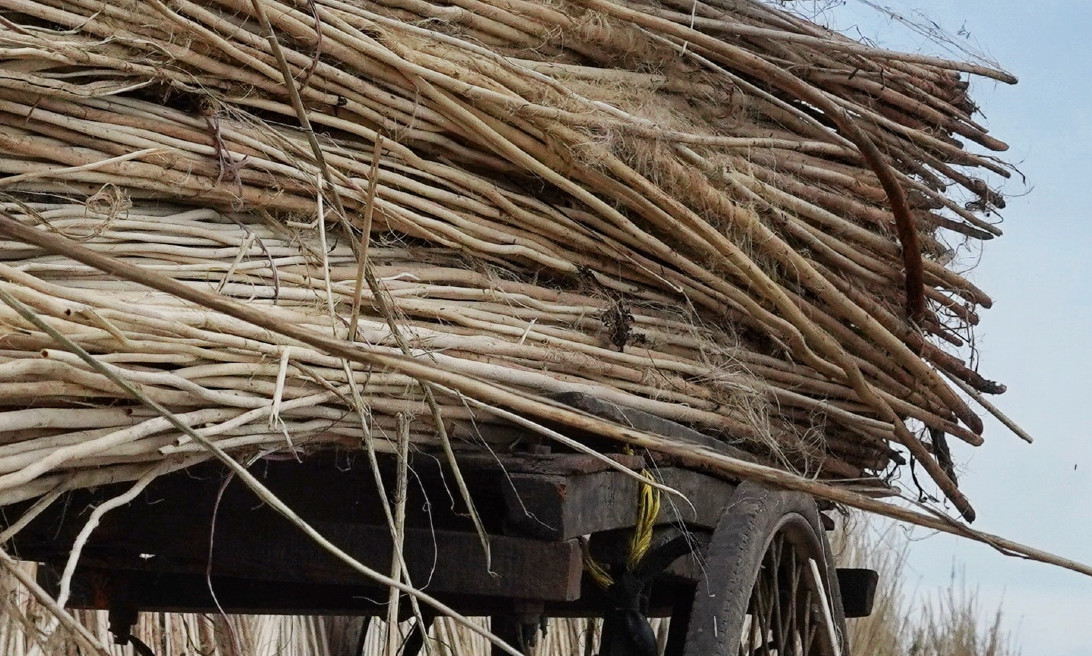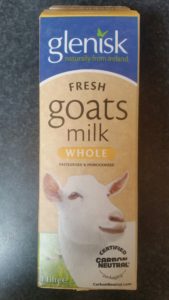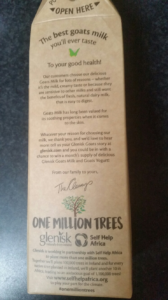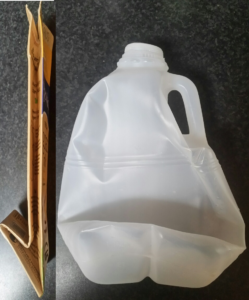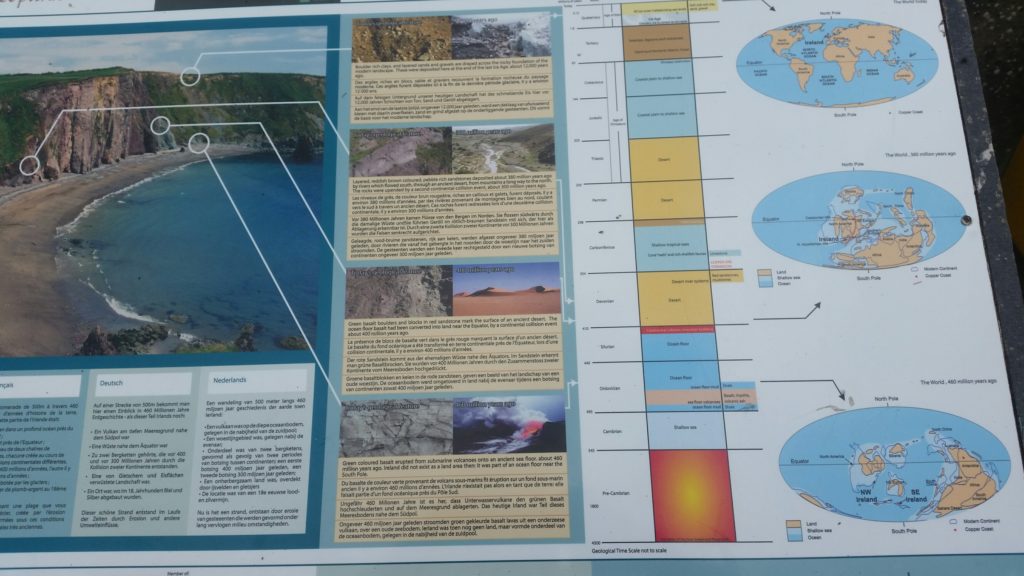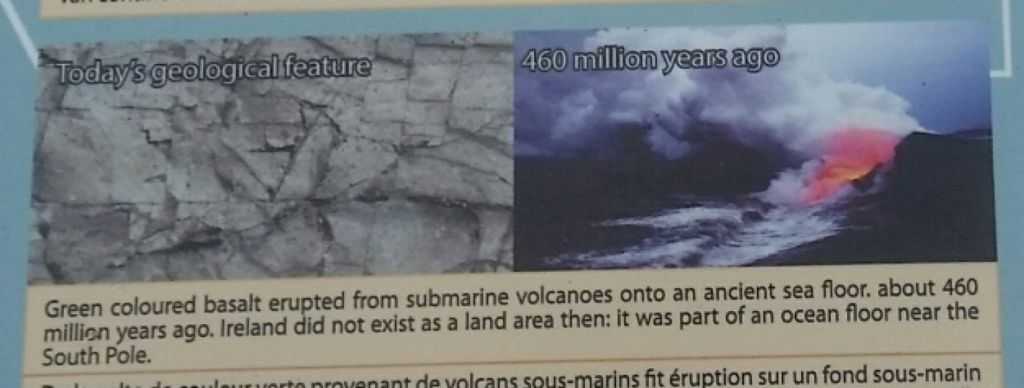After a long gap I am returning to my blog. During last lockdown I decided to learn a new skill and gave myself a 30 day challenge to touch type. My blog is a great opportunity to practice my typing without looking at the keyboard. The topic I have chosen is another thing stumbled upon when researching moisture that popped up when searching by Google on a completely different subject. This was a completely new topic for me and something I’d not come across before. As with some other topics I have written about, some new terminology cropped up. So, let’s have brief venture into Natural Fibre Composites (NFCs) and of course my take on these materials and their relationship with moisture.
NFCs

NFCs, what are they? Apart from the moisture aspect, what caught my attention in NFCs was using naturally sourced fibre materials to replace plastics such a nylon, and polyester. Some of the natural source I’d heard of; flax (cotton of course), jute and hemp, others new to me, kenaf and ramie and some more exotic tropical plants, acrea palm and rux. Materials that are natural with a potential for reducing the amount plastic waste in the environment has to be investigated. From the amount research literature on NFCs I’ve come across since these materials are being taken very seriously. As vegetable matter that is already grown in vast quantities, converting this to NFCs as substitutes for plastics has to be attractive. But it’s never that simple is it?
Biodegradable

A tantalizing prospect is that as vegetable derived material it is completely biodegradable and as waste much better for environment helping to reduce disposal of plastics and the consequential microplastics.
Here’s the rub, vegetable material naturally interacts with moisture as part of Nature’s recycling processes. Moisture weakens the strength of the fibres so to counteract this the fibres have to be further processed to prevent moisture uptake. Various approaches for doing this are being researched on different types of vegetable fibre resulting in ‘composites’, hence the name NFCs.
“Retting”, and the difference between green and mechanical retting.
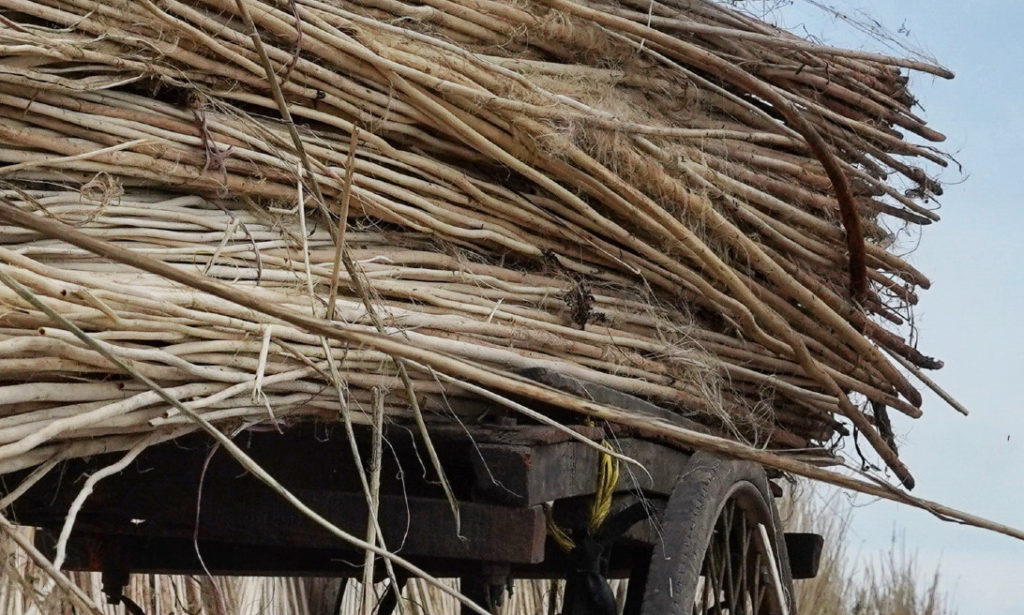
Green retting is the traditional way of preparing flax and other plant fibres.
The plants are laid out after cropping directly in the field. Natural processes that require moisture, break down the soft plant tissue and the fibrous stem material is harvested. A skilled farmer would harvest just at the right time where the soft tissue is broken down just enough to allow its separation from plant fibre and before the fibre itself degrades. Plant fibre prepared in this way is called “bast” and different plants produce bast with varying properties. Some more suited to weaving into everyday clothes others for making heavy duty materials. Mechanical retting separates bark, soft tissue, fibres and woody core that have a range of uses. However, lacking the natural microbial breakdown activity the bast fibre obtained in mechanical retting is a crude product and needs further treatment such as water retting to obtain a higher grade plant fibre.
Combined green and mechanical retting
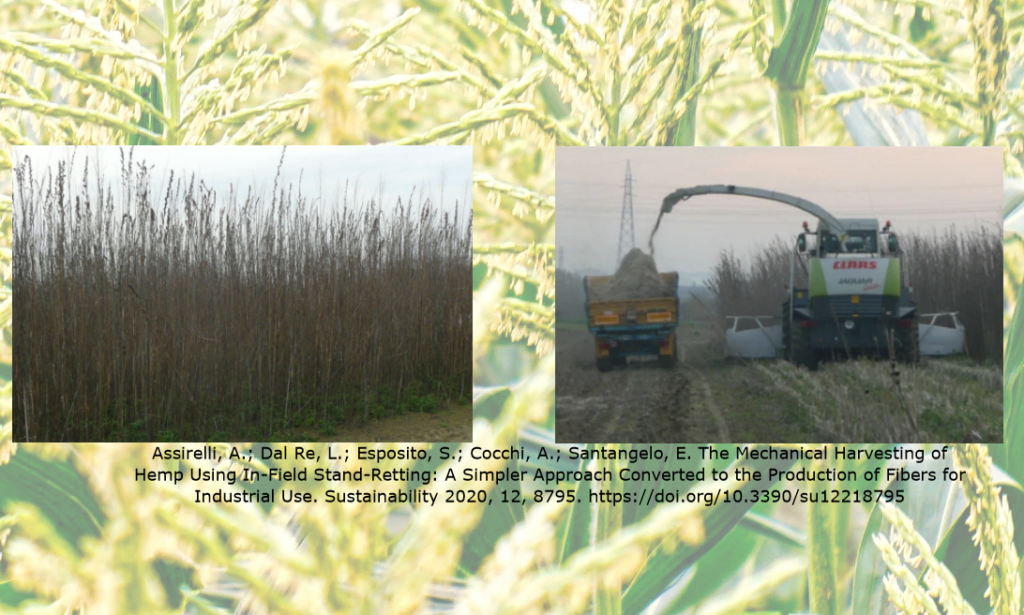
In a recently published paper the authors describe a combined green and mechanical retting process. Hemp plants are left standing in the field, “stand-retting”, and natural microbial breakdown is allow continue for a period.
Microorganisms need moisture and, although the hemp is starting to dry at this stage, the plant material picks up moisture from the atmosphere. The authors describe moisture uptake occurring by the “need” to reach an “equilibrium moisture content between the plants and the atmosphere”. This type of moisture interaction is humidity driven and explained in the Technical section of my eBook. After 4 months “stand-retting”, the crop was harvested using a mechanical retting machine. “Stand-retting” had made the separation of the plant fibres more efficient for mechanical retting.
Researchers are looking at how to expand the uses for the vast amount of bast fibre currently produced worldwide. Some of the focus is on how to treat the fibres to prevent of lessen the fibres ability for moisture uptake. A complete substitution for plastic would be ideal. Of course, there is always a price to pay and the treatments, particularly the chemical ones, will have to be balanced against the potential waste generated at industrial scale. In the immediate future most likely the NFCs will be a combination of plant fibre and plastic, at least, this reduces plastic use.
Moisture and Water
Time to get on my Irish Hobby horse (possibly the source of the “to get on your hobby horse” expression for incessantly talking or complaining about something). Published scientific papers on NFCs that include studies on the impact of water on the properties of the fibres use the term moisture. The actual standard test, named ASTM D570, describes immersion of a material in liquid water and the test results in a water-absorption value. In my understanding, “moisture” is defined as water vapour in the air. Authors of some of the published papers refer in their text to moisture absorption or moisture uptake. Some even use the terms “water” and “moisture” interchangeably as though there was no difference. A trivial point you may think, but not to me…..I find it just as annoying when people who should know better use the words bacteria and virus as if there is no difference, but that’s another story.
The subtle bit here is once the NFCs have absorbed water, the test to give the water-absorption value is a test for moisture. By heating a sample of the material, water is driven from the surface as moisture when it enters the air around the sample. The assumption is that all of the water absorbed from the liquid state is released as moisture. No water should remain the sample therefore all the moisture released equals the amount water that was in the sample. There you go, easy!
I write about how humidity and moisture effects everything around us. If you would like to hear more on the impact of moisture, various topics on moisture and humidity are discussed in my eBook “A Wetter Look At Climate Change”.

